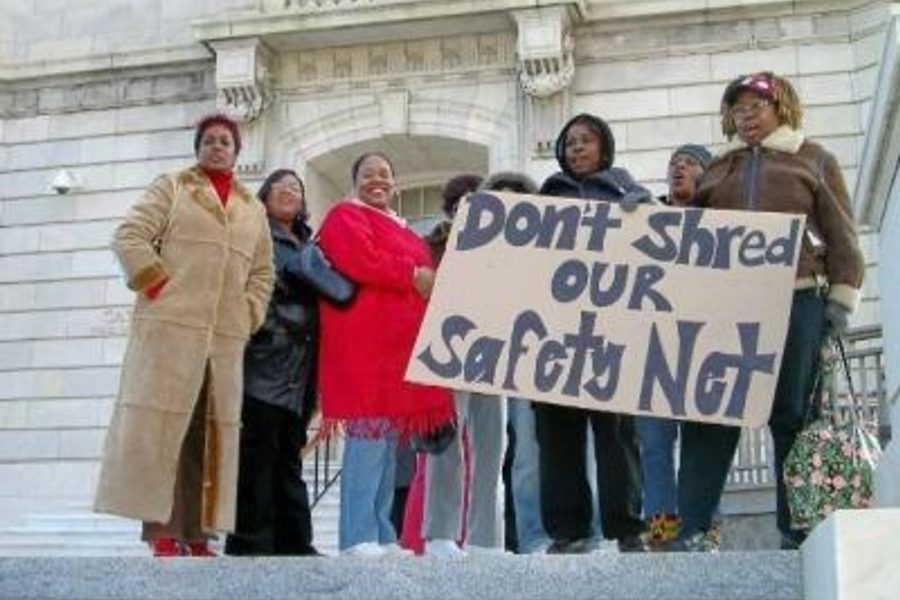
Ever since the economy took a nose dive, welfare has turned into even a worse deal for nearly everyone involved.
More people are broke, so they turn to welfare. The feds have only so much money to spread around, so there is a greater pinch for scare welfare dollars.
And because money-strapped states have to cut wherever they can, folks on welfare get pushed further aside and short-changed even more.
This has not been an unexpected symptom for an economy that has gone sour for millions. The problem with this scenario is that this time, there is unlikely to be any financial rainbow waiting down the road for the thousands, who have slipped to the bottom of the economic ladder.
Come September, the immediacy of the situation may become quite clear. That is when added money pumped into the states by the federal government to help them with their added welfare burdens runs out.
Before the economic collapse, most of the nation was under pressure to meet new federal guidelines that took effect in 2005, which called for states to put more welfare recipients into jobs or markedly boost their efforts to find work.
Along came the nation’s economic woes in 2007, however, and the reality for welfare recipients and the states changed markedly. The General Accounting Office (GAO) details the changes in a recently released report.
Between December 2007 and September 2009, the number of families on welfare has grown by six percent, according to the GAO report. But that number is deceptive because the increases have variedly widely among the states and among recipients themselves.
For example, there was a 57 percent increase in the number of two-parent families nationally receiving welfare. However, in Florida, which has suffered greatly in the economic wipeout, the number of two-parent households on welfare jumped 200 percent.
Likewise, Oregon saw a 48-percent increase in families on welfare. Vermont had a 28-percent increase and Texas’s welfare rolls went up 16 percent, the GAO report shows.
In several states where GAO workers looked into the situation, they learned that a number of the new welfare recipients formerly owned their own small businesses, and were unable to apply for unemployment benefits.
Despite the infusion of money for the state welfare programs from the Recovery Act last fall, many states have had to make cutbacks in terms of money or manpower. Oregon slashed the money it gives to welfare recipients from $150 a month to $100 a month in July last year and is on schedule to cut that down to $50 a month in October, the GAO said.
So what will happen for the new arrivals on the welfare rolls and the long-termers, the folks still on the rolls after a nearly 50 percent drop in the number of families on the dole since welfare rules were tightened in 1997?
More will struggle harder and fail to get unstuck, more will attempt to live on less than before, and more will just give up. And you can imagine what their lives will be like.
A former labor writer for the Chicago Tribune, Stephen Franklin is a Pulitzer Prize finalist and an adjunct professor at the University of Illinois Urbana-Champaign School of Labor and Employment Relations.







